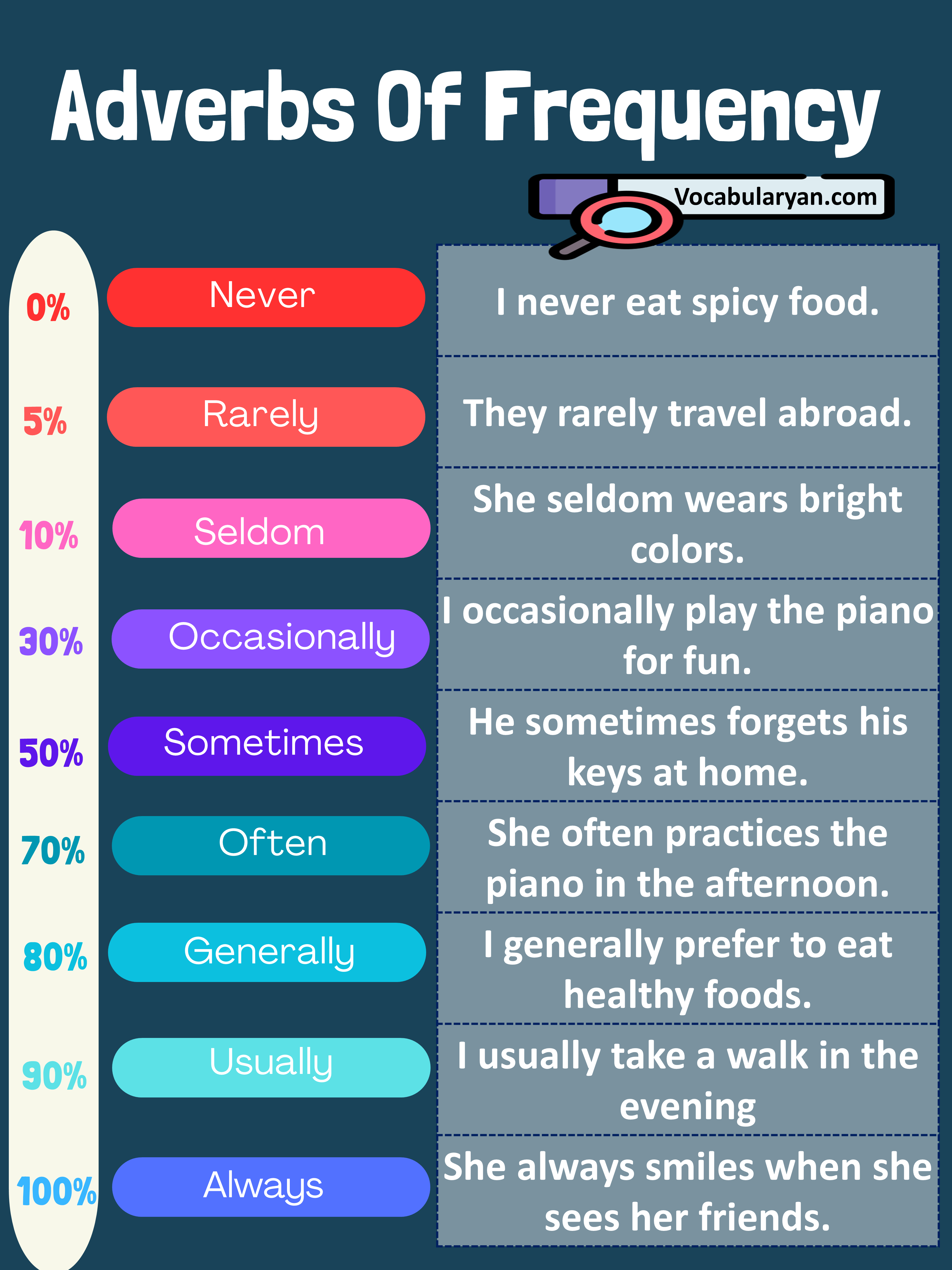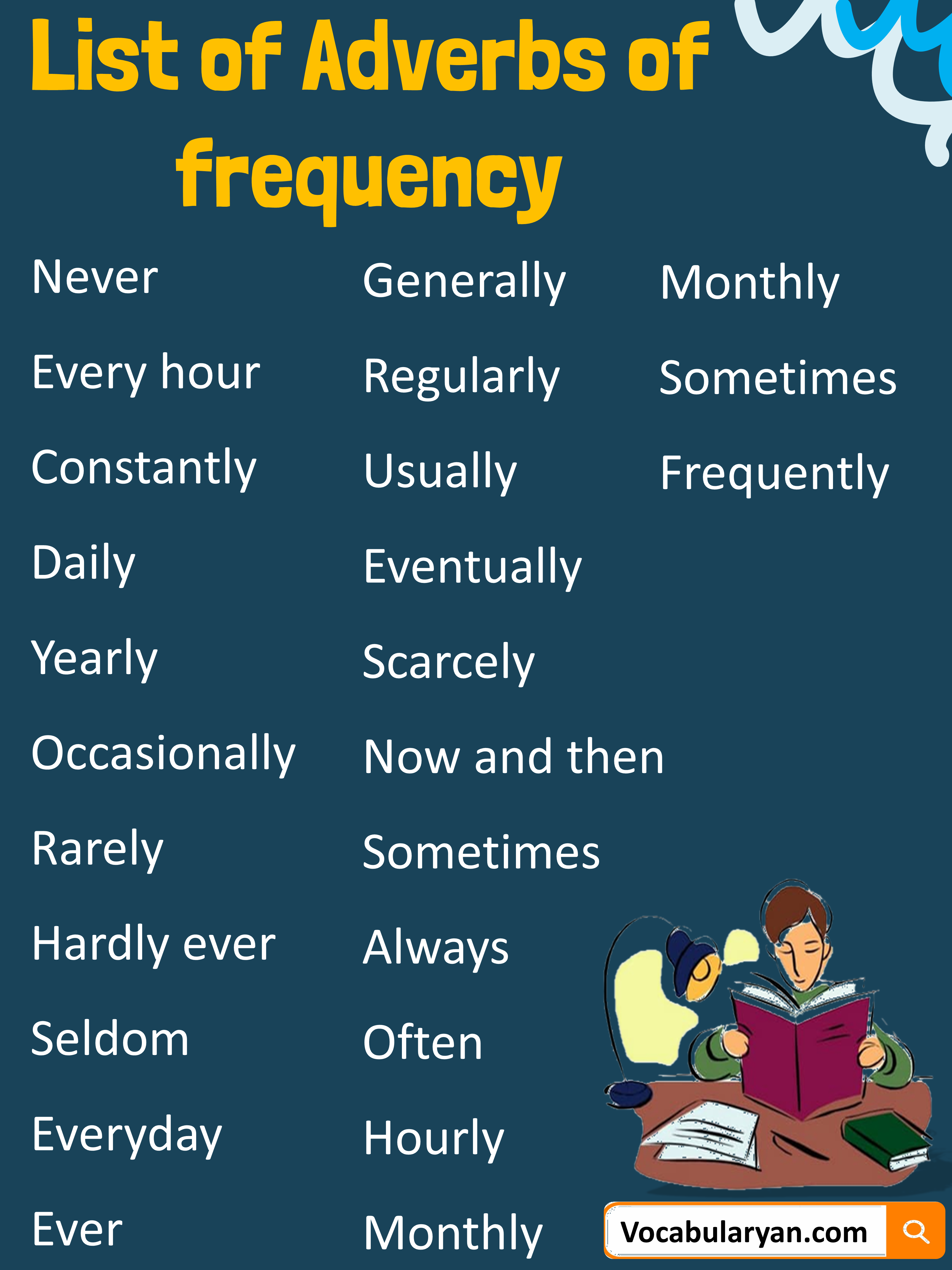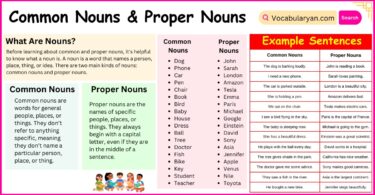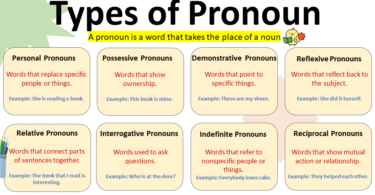Learning Adverbs of Frequency in English is important for expressing how often an action happens. Words like always, usually, sometimes, rarely, and never help describe regularity in daily routines and habits. Additionally, terms such as often, occasionally, and seldom provide more variety in describing repeated actions. These adverbs usually come before the main verb or after the verb “to be.” Whether you’re writing, speaking, or studying grammar, using frequency adverbs makes your communication more clear, accurate, and natural.
Adverb of Frequency
An adverb of frequency is a type of adverb that indicates how often an action occurs. These adverbs provide information about the frequency or repetition of an action or event. Adverbs of frequency help answer the question “How often?”
Always
She always smiles when she sees her friends.
They always complete their homework on time.
Usually
I usually take a walk in the evening.
He usually orders a salad for lunch.
Often
They often visit their grandparents on weekends.
She often practices the piano in the afternoon.
Sometimes
I sometimes watch movies on Friday nights.
He sometimes forgets his keys at home.
Rarely
She rarely eats fast food.
They rarely travel abroad.
Seldom
He seldom complains about anything.
She seldom wears bright colors.
Hardly Ever
They hardly ever go to the beach.
I hardly ever hear from my old classmates.
Never
I never eat spicy food.
She never arrives late for meetings.

Types of Adverb of Frequency
Adverbs of frequency tell us how often something happens. They are divided into categories like always, usually, often, sometimes, rarely, and never. These adverbs help describe the regularity of actions, from happening all the time to not at all.
Absolute Frequency Adverbs:
These adverbs specify the exact number of times an action occurs in a given period.
Examples: “twice,” “three times,” “four times a week.”
High-Frequency Adverbs:
These adverbs indicate a high or frequent occurrence of an action.
Examples: “always,” “usually,” “often,” “frequently,” “regularly,” “daily.”
Moderate Frequency Adverbs:
These adverbs suggest a moderate or intermediate level of frequency.
Examples: “sometimes,” “occasionally,” “from time to time,” “now and then.”
Low-Frequency Adverbs:
These adverbs imply a low or infrequent occurrence of an action.
Examples: “rarely,” “seldom,” “hardly ever,” “almost never.”
Negative Frequency Adverbs:
These adverbs express the absence or non-occurrence of an action.
Examples: “never,” “not often,” “not usually.”
Indefinite Frequency Adverbs:
These adverbs give a general idea of frequency without specifying exact numbers or levels.
Examples: “sometimes,” “often,” “occasionally,” “rarely.”
Indefinite Frequency Adverbs:
Indefinite frequency adverbs describe how often an action occurs without specifying a specific time or frequency. These adverbs provide an approximate idea of the frequency of an action. Adverbs of frequency are categorized based on the frequency they express
Placement of adverbs of frequency in a sentence
Adverbs of frequency can be placed in different positions within a sentence, depending on the intended emphasis and sentence structure. The placement of adverbs of frequency can vary based on the specific adverb, sentence structure, and the emphasis you want to give to the frequency. In most cases, they are flexible and can be moved around within a sentence without changing the basic meaning. Here are the main positions where you can place adverbs of frequency:
Before the main verb:
Example: “She always arrives early for the meeting.”
Example: “They often go to the movies on weekends.”
After the verb “to be” (am, is, are, was, were):
Example: “He is usually very punctual.”
Example: “They were always so supportive.”
Between the auxiliary verb (if present) and the main verb:
Example: “I have never been to Europe.”
Example: “She will sometimes work from home.”
At the beginning of a sentence for emphasis:
Example: “Always, be honest with your friends.”
Example: “Never forget to say ‘thank you.'”
At the end of a sentence:
Example: “They go to the gym regularly, usually in the evenings.”
Example: “She volunteers at the animal shelter, sometimes.”
In a question, before the subject:
Example: “Often, do you visit your grandparents?”
Example: “Rarely, does he eat fast food?”
Indefinite Frequency Adverbs
Indefinite frequency adverbs describe how often an action occurs without specifying a specific time or frequency. These adverbs provide an approximate idea of the frequency of an action. Adverbs of frequency are categorized based on the frequency they express. Here are some common degrees;
Indefinite Frequency Adverbs are;
| Serial no. | Indefinite Frequency Adverbs | Range % |
| 1. | Always | 100% |
| 2. | Usually | 90% |
| 3. | Often/ Normally | 80% |
| 4. | Frequently | 70% |
| 5. | Sometimes | 50% |
| 6. | Occasionally | 30% |
| 7. | Rarely | 15% |
| 8. | Seldom | 10% |
| 9. | Hardly ever | 5% |
| 10. | Never | 0% |
Indefinite Frequency Adverbs
Indefinite frequency adverbs describe how often something happens, but without giving an exact time. Words like often, usually, sometimes, rarely, and occasionally fall into this group. They give a general idea of frequency rather than a specific number.
• Never
• Every hour
• Constantly
• Daily
• Yearly
• Occasionally
• Rarely
• Hardly ever
• Seldom
• Everyday
• Ever
• Frequently
• Generally
• Regularly
• Usually
• Scarcely
• Always
• Often
• Eventually
• Hourly
• Monthly
• Sometimes
• Normally
• Now and then





Leave a Comment